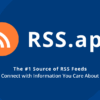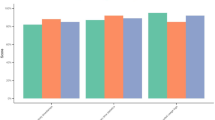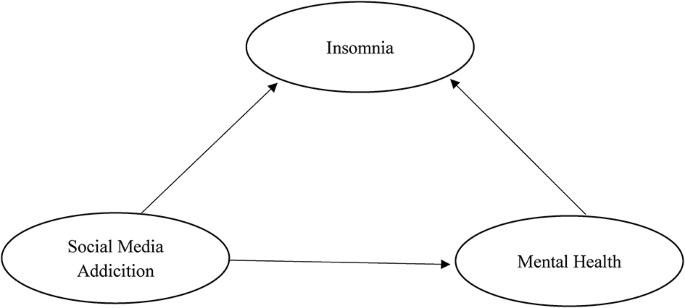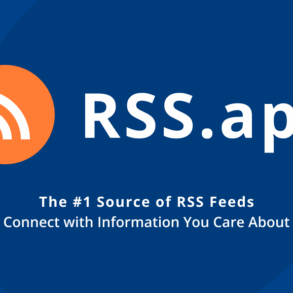Abstract
The issue of social media addiction among university students is very severe. Identifying possible risk factors for social media addiction is crucial. The objective of this research was to analyze the association between social media addiction and mental health issues, such as depressive symptoms, among university students and to explore the potential mediation effect of insomnia on this association. The cross-sectional research from October to November 2024 recruited 727 students (486 male and 241 female) from three comprehensive universities in Saudi Arabia. Statistical analyses, including descriptive statistics, correlation, regression, and mediation analyses, were conducted using Analysis of Moment Structures (AMOS) version 25.0 and the Statistical Package for the Social Sciences (SPSS). The present research identified favorable associations between social media addiction and mental health issues, such as depression symptoms, among Saudi university students. It was also found that insomnia played a mediating role in the relationship between social media addiction and mental health. Our findings underscore the essential need for prevention and early detection of social media addiction in university students, particularly those who have insomnia.
Similar content being viewed by others
Introduction
Social media platforms, like Instagram, TikTok and Snapchat, are extremely common among students at universities in Saudi Arabia1,2. Concerns have emerged over students’ social media usage and its effects on their mental health, specifically concerning depression symptoms3,4. social media have facilitated novel interactions and experiences in social communication, information access, mobile commerce, mobile learning, and the healthcare sector5,6,7. Nonetheless, the adaptability of social media has resulted in a growing prevalence of excessive usage, particularly among university students8. The excessive use of social media is frequently linked to potentially detrimental and/or destructive behaviors, and this concerning usage has typically been framed as a behavioral addiction. social media addiction can be classified as a disorder of impulse control, characterized by behavioral and emotional issues stemming from unchecked, unsuitable, or excessive social media usage, resulting in a compulsive condition that impairs one’s psychological, physical, and/or social capabilities9,10. social media addiction May result in adverse health consequences. Research has indirectly shown potential biological and psychological links between social media addiction, insomnia, and depressed symptoms. social media addiction is a contributing cause to sleep disruptions, with extended usage strongly associated with insomnia and reduced sleeping time11,12,13. Furthermore, persistent contact “blue light” inhibits melatonin synthesis, leading to circadian disturbance, sleeplessness, and cognitive overload, which May significantly contribute to the emergence of psychopathological symptoms, including depression14,15. Individuals addicted to social media are more prone to engage in unhealthy behaviors, which May also serve as predisposing factors for depression and mental health issues16. Consequently, social media addiction May result in significant psychological problems, including symptoms of sadness, anxiety, and severe mental health disorders, such as sleeplessness17,18. Although substantial research has been conducted on the association between social media addiction, mental health, and insomnia, prior findings remain inconsistent or comprehensive, necessitating further investigation to validate these results across many societal as well as cultural environments. There are limited studies on insomnia as a mediator in Saudi contexts. To address this research Gap, we performed the research with a sample of “Saudi university students.” this research investigation attempted to ascertain if the preventive measures and control of social media addiction May mitigate mental health issues among Saudi university students. To confirm if the insomnia experienced by students May be mitigated by diminishing social media addiction, and whether mental health symptoms May be relieved by the enhancement of insomnia. The hypothesized model was outlined below in Fig. 1
Literature review and hypotheses development
Social media addiction and mental health
Depression is a detrimental emotional state characterized by a constellation of recurrent and profound internal issues, including persistent low mood, diminished motivation, low self-worth, feelings of worthlessness, and an aversion to previously enjoyed activities, which have endured for an extended duration and resulted in significant distress for the sufferer. In other words, the utilization of social media by individuals might lead to depressed symptoms, while depression resulting from excessive social media use may also affect individual mental health. Currently, several studies examine the adverse feelings associated with depression that contribute to poor social media usage19,20. The impact of social media use on the mental health of young people has sparked a continuous discussion with inconclusive findings. Divergent perspectives exist on the effects of SM usage duration on the MH of youth. Certain studies indicate a correlation between this relationship Lin, Sidani, Shensa, Radovic, Miller, Colditz, Hoffman, Giles and Primack21; conversely, other research demonstrates that time spent on social media had no relation to “individual longitudinal” variations in depressive disorders22. The divergent outcomes may indicate that merely quantifying time spent on social media does not necessarily elucidate the psychological mechanisms involved, such as the motivations for utilizing social media for societal support. Existing literature indicates two primary motivations for social media utilization: knowledge gain and socialization23. The information-gain motivation exemplifies the information-gaining activities of individuals who navigate various social media sites to obtain the “information” they require. The socialization motivation elucidates communication-regarded endeavors that incentivize individuals to sustain and broaden their social networks through social media engagement. In the “COVID-19” staying-home mandates, such motivations would likely elevate people’s social media usage. Individuals seek further knowledge of the disease and preventive strategies during public health emergencies. Compulsory isolation heightens the demand for online social connection, yet the relationship between these motivations and mental health in young people remains inadequately understood. Zhong, Huang and Liu24 describe the ambiguous effects of social media usage on “mental health (MH).” Their research revealed that social media utilization was advantageous since it provided questionnaire respondents with the latest health information and facilitated connections with peers during state-imposed lockdowns that severely restricted or forbade in-person contact.
Nevertheless, the heightened impression of “social media (SM)” as a provider of “informational and emotional” assistance led to greater time spent on these platforms, which subsequently resulted in a rise in mental health issues among inhabitants of Wuhan. Zhong, Huang and Liu24 investigate the direct correlation between mental health disorders and social media usage duration throughout the pandemic. Nonetheless, the study elucidates the impact of motivations for utilizing SM or social support on depression. The correlation between excessive SM usage duration and mental health should be re-evaluated among youth in the United States, according to prior inconclusive results. Consequently, we formulate the subsequent hypotheses.
H1
There is an association between social media addiction and mental health.
Social media addiction and insomnia
To facilitate healthy development, adequate sleep—encompassing sleeping quality, duration, and efficiency—is essential for young people since it is crucial for enhanced cognitive and emotional processing25,26. Enhanced cognitive and emotional processing facilitates suitable social engagement and learning across developmental stages. Sleep is linked to improved physical health, emotional well-being, and general quality of life25,26,27. Consequently, excellent sleep quality in young people and adolescents has been recommended28. Alterations in digital technologies and their application may interfere with sleep, as evidenced by associations between web addiction and inadequate sleep in a new “meta-analysis” Alimoradi, Lin, Broström, Bülow, Bajalan, Griffiths, Ohayon and Pakpour29, as well as the adverse correlations between screen time and sleeping30,31,32. Young people are often susceptible to risky behaviors and defying boundaries, such as exceeding parental bedtimes. Consequently, interventions advocating for proper sleep hygiene practices for young people have been encouraged, particularly to assist them in resisting the allure of “digital technologies”29,33. Concerning internet-related issues, excessive SM usage, commonly called addicted social media use, merits attention due to its association with poor sleep patterns33,34,35. Nonetheless, most research connecting inadequate sleep and excessive social media usage is cross-sectional, offering a minimal understanding of directionality.
Furthermore, considering that sleep encompasses a wide range of phenomena, we want to concentrate on a specific category of sleep disorders, namely insomnia, in this work. Insomnia is specifically characterized by challenges in initiating or maintaining sleep36. Moreover, empirical data from current cross-sectional research corroborates the relationships between insomnia and excessive SM usage37. Nonetheless, there is an absence of long-term studies to evaluate the correlations between addictive social media usage and sleeplessness. Consequently, longitudinal research is essential to investigate how addictive SM usage may result in insomnia, sleeplessness may lead to addictive social media use, both phenomena occur, or neither transpires. The compulsive usage of social media is seen as a distinct form of internet addiction38,39.
Furthermore, several researchers have discovered that the obsessive usage of SM is intertwined with mobile addiction, and advancements in the taxonomy within this domain have been achieved39. Social media addiction is seen as a form of generic Internet addiction that may encompass other specialized types of Internet addictions that result in insomnia40. Based on the literature, we proposed the below hypothesis:
H2
There is an association between social media addiction and insomnia.
Insomnia and mental health
In the last two decades, several theories have been proposed to clarify the genesis and pathophysiology of insomnia, primarily emphasizing the interplay of stress and psychological factors in its onset41. The unique psychological profile of individuals with insomnia, marked by cognitive-emotional hyperarousal (encompassing obsessive, anxious, ruminative, and dysthymic traits) and emotion-focused coping mechanisms, is thought to be premorbid and to impact the disorder’s etiology significantly. Insomnia is associated with precipitating life events Fernandez-Mendoza and Vgontzas42 and cognitive-emotional arousal Robotham43 and is seen by the patient as intrinsically distressing. Consequently, insomnia is anticipated to correlate with the activation of mental health problems, e.g., stress response system. Based on the evidence, we proposed that:
H3
There is an association between Insomnia and mental health.
Mediating impact of insomnia
Tandon, Kaur, Dhir and Mäntymäki44, established and empirically verified a model based on a theory of compensatory internet use Kardefelt-Winther45, demonstrating a substantial correlation among “psychological well-being,” compulsive SM usage, and sleeping problems. Additional research has correlated the detrimental usage of social media with the subjective well-being of adolescents25,46. Prior longitudinal research demonstrates that Meta usage is inversely associated with user “well-being”47. The latest “cross-sectional” research involving 1,791 pupils from three educational institutions in Qazvin, Iran, investigated the relationship between problematic social media use, mental distress associated with morningness/eveningness, and daytime sleepiness, and their potential mediating effects on participants’ sleep quality and insomnia. The findings illustrated the impact of chronotype on problematic social media usage, sadness, daytime drowsiness, and anxiety. Moreover, the mediational effects of insomnia and sleeping quality were noted48. A study that included 1073 Iranian people, Lin, Namdar, Griffiths, and Pakpour 49, showed that problematic social media usage adversely affects life quality and general contentment. It markedly decreased their levels of despair and stress. The favorable effect was facilitated by users’ generalized trust and perceived social support on social media. Nonetheless, it markedly decreased their levels of despair and anxiety. The beneficial impact was facilitated by users’ generalized confidence in social media and their perceived social support. Excessive Facebook intrusion results in heightened attachment, disrupting relationships and everyday activities49. A study by Zhao50, revealed that regular use is associated with beneficial health outcomes. The emotional attachment to SM usage results in diminished social well-being and worse mental health outcomes. Howard51, identified a substantial correlation between poor social media usage, self-worth, and social body anxiety.
Nevertheless, it did not substantially impact general well-being51. In a separate online study, obese children who experienced “COVID-19” infection exhibited heightened worry and tension, which were correlated significantly with problematic social media usage, therefore predicting mental discomfort52. Sleep difficulties resulting from excessive internet usage are a major contributor to depression generated by ‘pathological internet use’53. Zhang, Tran, Hinh, Nguyen, Tho, Latkin and Ho54, found no significant correlation between internet usage and sleep. Previous research has demonstrated a correlation between social media addiction and sleep disruptions, including a reduction in sleep duration, heightened exhaustion, delayed sleep onset, insomnia, compromised sleep quality, and teenage insomnia, culminating in a public health issue related to sleep. Consequently, poor internet usage may originate and/or exacerbate students’ sleep difficulties Alimoradi, Lin, Broström, Bülow, Bajalan, Griffiths, Ohayon and Pakpour29, adversely impacting their MH and academic performance55. Moreover, it results in inadequate sleep, melancholy, anxiety, and diminished self-esteem, significantly impacting overall quality of life25,46. Meta-analysis revealed a substantial odds ratio for sleeping disturbances and reduction in sleep duration in those depending on the Internet29.
“Social media addiction (SMA)” is markedly correlated with sleep delay, sleep length, subjective sleeping quality, students’ MH, and academic achievement. Recent research identified the mediating influences of sleeping quality and insomnia on the relationship between problematic SM usage and mental discomfort48. A fair “night’s sleep” is crucial for humans’ psychological and mental health29,30. Moreover, sleep is linked with social, physical, and “mental well-being” and overall “quality of life”26,56. Regrettably, the fast advancement of technology may hinder many individuals in developed societies from attaining quality sleep26. Moreover, exposure to strong light while browsing the internet may inhibit melatonin release, postponing sleep and exacerbating sleep disorders and alertness57. According to Kitazawa, Yoshimura, Murata, Sato-Fujimoto, Hitokoto, Mimura, Tsubota and Kishimoto58, over 50% of university students with social media addiction had a higher susceptibility to sleep disruptions compared to their peers who were regular social media users. This study yielded inconclusive results about the relationship between social media addiction and sleep difficulties29,59. This study examines the intricate relationship among mental health, problematic social media use, and the potential mediating role of insomnia, a topic inadequately addressed in prior research.
H4
Insomnia mediates the relationship between social media addiction and mental health.
Materials and methods
Research design and participants
A “multi-stage stratified random” selection approach was employed. It is practical for primary data collection for large populations that are geographically dispersed. Students were randomly picked from three universities in three major cities, including Riyadh, Jeddah, and Dhahran, spanning the geographical variety of the country from the central, western and eastern parts. The reason for chosing these three universities were geographical and cultural diversity. The questionnaire was distributed from October to November 2024. Initially, we randomly chose several classes from every institution. Subsequently, paper questionnaires were administered to every individual, and professionals were assisted in finishing the survey in twenty minutes to ensure its validity. The investigators’ assistance has solely pertained to the completion instructions of the questionnaire, including the allocation of reserved time and the indication of where to respond without engaging in the discussion of the questionnaire’s substance. The eligibility criterion consisted of unemployed and full-time students. Eight hundred pupils were recruited. Seventy-three students were removed from the study due to missing or inconsistent data on essential characteristics. Upon the exclusion of incorrect data, the legitimate sample comprised 727 students, of which 486 were male and 241 were female. Further details are provided in Table 1.
First, the use of self-administered questionnaires may result in common method bias, a measurement error stemming from the specific methodologies employed in the study regarding the scales, data collection techniques, and analysis methods60. To rectify this bias, both procedural and statistical solutions exist. In certain instances, a study strategy that mitigates the impact of common method bias may be employed, such as utilizing numerous data sources or employing varied measurements for the same construct. In certain instances, statistical methods may rectify common method bias. This study used a statistical technique to assess common method variance (CMV) via Harman’s single-factor test, which entails extracting a singular factor anticipated to explain less than 50% of the total variance attributed to the first factor in principal components analysis60. The maximum variation for our study constructs was 33.72%, indicating the absence of common method bias in the findings.
Ethics approval
The present study obtained approval from the Research Ethics Committee of King Fahd of Petroleum and Minerals (reference number: 2024012, data approved: 2024.07.22), and all methods were performed according to the relevant guidelines and regulations. Informed consent was obtained from all subjects before participation.
Instruments
Social media addiction
Social media addiction was assessed using the 6-item Bergen Social Media Addiction Scale61,62. Participants were instructed to “Please answer the following questions regarding your social media usage over the past year,” with each item evaluating a widely recognized fundamental aspect of addiction: preoccupation, mood modification, tolerance, conflict, withdrawal, and relapse63. For instance, the sample question was, “Do you become restless or troubled if prohibited from using social media?” Participants responded using a 5-point Likert scale.
Insomnia
Abdel-Khalek64, created a scale to assess insomnia symptoms. The scale’s construction is founded on the theoretical model of insomnia and two diagnostic criteria: the fourth edition of the Diagnostic and Statistical “Manual of Mental Disorders (DSM-IV)” and the “International Classification of Sleep Disorders (ICSD).” It has twelve items scored on a five-point Likert scale. The sample question was, “I find it difficult to sleep.”
Mental health
To asses Mental health, we used Kroenke, Spitzer, Williams and Löwe65, scale. The “Patient Mental Health Questionnaire” is a nine-item self-administered instrument. The sample items were “Having little interest or pleasure in doing things.“, “Feeling tired or having little energy.“).
Building the reliability of the questionnaire
Preliminary research was undertaken before the main study to evaluate the “reliability” of the “questionnaire.” A sample of roughly 77 people was selected, representing approximately 10.59% of the overall population. “Internal consistency” was assessed with the “Cronbach’s alpha (CA)” test in the Social Science Statistical Package. An Alpha of 0.7 is typically regarded as a strong sign of reliability, as corroborated by other resources66,67. This criterion is generally recognized in social sciences studies. Table 2 exhibits a reliability level that satisfies this defined requirement. Table 2 enumerates the constructions and their corresponding “CA coefficients,” signifying that participants effectively comprehended the items. The demographic information of 727 individuals is presented in Table 1. The participants’ demographic data comprises 727 university students, 486 males and 241 females. Of the 515 participants, 70.84% are aged 18–22, while 29.16% are aged 23–27. The participants’ educational attainment indicated that 80.06% were enrolled in undergraduate programs, while 19.94% were enrolled in master’s degree programs.
Data analysis and results
The “Social Science Statistical Package (SPSS),” “Analysis of Moment Structures (AMOS),” and “Structural Equation Modeling (SEM)” were employed to assess the data for “reliability, validity, correlations,” and descriptive statistics. We conducted “confirmatory factor analysis (CFA)” and SEM to evaluate our proposed model. The structural equation modeling was utilized to corroborate the research assumptions, which are extensively applied in social sciences research68,69. The consistency analysis assessed the reliability and authenticity of all items70. We utilized a three-phase methodology to execute SEM strategy71. Initially, the research used a measuring technique to assess component scores for each item. Second, “discriminant validity” was assessed using Confirmatory Factor Analysis, and third, the model was evaluated by Structural Equation Modeling (SEM) techniques72. These measures were used to guarantee the validity and reliability of the model. The studies of mediating effects were conducted using Analysis of Moment Structures 21.0 and the Social Science Statistical Package.
Descriptive statistics and correlations
Table 3 presents the summary of coefficients, the zero-order correlations, and the descriptive statistics. Social media addiction has a substantial association with insomnia (r = 0.43, p < 0.01) and mental health (r = 0.35, p < 0.01). A considerable correlation was identified between insomnia and mental health (r = 0.44, p < 0.01). Discriminant validity was evaluated by the square root of the average variance extracted (AVE). Table 3 illustrates adequate discriminant validity since the square root of each construct’s AVE exceeded the correlations between the latent variable pairings. Furthermore, convergent validity was confirmed with factor loadings between 0.749 and 0.963 (Table 4), all beyond the suggested threshold of 0.5073. Table 5 measurement model presents many fit indices, including “2/df, the Tucker-Lewis index (TLI), the comparative fit index (CFI), the standardized root mean square residual (SRMR), and the root mean square error of approximation (RMSEA)”.
Direct and mediating effects of insomnia
The results of this research aligned with the methodologies outlined by Preacher and Hayes74, and Baron and Kenny75. Table 6 illustrates a substantial correlation between social media addiction and mental health (β = 0.315, p < 0.001). Baron and Kenny75 indicate that the initial mediation criterion is satisfied. Subsequently, a positive significant correlation was observed between social media addiction and insomnia (β = 0.537, p < 0.001). Consequently, the study’s findings corroborated the 2nd criterion of mediation and hypothesis (H2). Insomnia correlates highly with mental health (β = 0.349, p < 0.001). This relationship is also corroborated by (H3). Mediation was assessed following the guidelines of Preacher and Hayes74. Following the recommendations of Baron and Kenny75, the scholars assessed the substantial indirect effects by bootstrapping the sample distribution. The findings indicated that the indirect impact of social media addiction on mental health is significant (β = 0.187, p < 0.001), (S.E. = 0.056), and (t = 3.339). The bootstrapping results at a 95% confidence level for all confidence intervals did not include zero “(Lower Level of Confidence Interval (LLCI)” = 0.165, “Upper Level of Confidence Interval (ULCI) = 0.272)”. Consequently, these findings are corroborated (H4) as mentioned below in Table 6.
Discussion
Despite several research examining the association between social media addiction and mental health, the fundamental mechanisms of this relationship have yet to be investigated. Consequently, we created a mediation model to examine the impact of insomnia on this process. The findings suggest that social media addiction may substantially forecast depressive symptoms and impact mental health. Furthermore, insomnia served as a mediation factor in the relationship between social media addiction and mental health. Our findings also support earlier research; all assumptions developed concerning theoretical associations between variables were confirmed in this research. The hypothesis testing results suggest that social media addiction affects mental health, confirming Sadagheyani and Tatari76, study’s conclusions that usage of social media has negative effects on mental health, e.g., depression, loneliness and anxiety. The findings of our research that there is an association between social media addiction and insomnia is consistent with Lin, Potenza, Ulander, Broström, Ohayon, Chattu and Pakpour77, who discovered that social media addiction results in insomnia among Iranian adolescents. The hypothesis that insomnia positively associates mental health aligns with the research findings Palagini, Hertenstein, Riemann and Nissen41,78, who discovered that insomnia results in mental health problems. A study conducted by Zhang, Tran, Hinh, Nguyen, Tho, Latkin and Ho54, in Vietnam has a discrepancy that highlighted that being single and those who were using tobacco products were not at heightened risk of developing associated sleep-related issues. However, no one has specifically investigated the direct association of SMA on MH with a mediating role of insomnia in Saudi university students. According to the findings of this study, insomnia enhances and positively mediates the association between social media addiction and mental health. Hence, the present study assessed this gap and established that insomnia enhances and mediates the association between social media addiction and mental health among university students.
Chronic sleep loss resulting from social media addiction may impair the immune system, rendering individuals susceptible to several illnesses79. An alternative explanation is the widespread “emotional contagion” phenomena in the digital Internet era80. Mobile phones are a significant medium for accessing social networks; perusing social media platforms before sleep may adversely affect mood, resulting in sleep disruptions. This study enhanced our comprehension of the relationship between social media addiction and the emergence of depression symptoms, contributing to mental health issues. Generally, more time spent on social media correlates with diminished real-life interactions, perhaps resulting in feelings of loneliness and sadness. Moreover, extended and excessive engagement with social media might trigger social comparisons, which have been demonstrated to result in unpleasant feelings and sadness81. Our findings indicate that the illness resulting from addictive behavior arises from the interplay between an individual’s fundamental traits and mediating variables82,83. Past research efforts have utilized young individuals as samples; nevertheless, notable disparities exist in “education level,” employment, and “marital status”3,84. Our study samples comprised “university students” from Saudi Arabia who share the common social position of “students” within the campus environment, possessing the same educational levels and marital statuses. They have analogous societal expectations, resulting in parallels in the correlation between social media addiction and insomnia.
Furthermore, students residing in the dorms must consider their neighbors’ sleep routines. These factors may restrict pupils from utilizing computers during nighttime. Mobile phones can supplant PCs in several roles owing to their simplicity, superior performance, and accessibility. The current generation of smartphones enables consumers to engage in many online activities, including surfing social networks, viewing movies, and playing online games.
Theoretical and practical implications
Our findings include both theoretical and practical ramifications for mitigating social media addiction, mental health issues, depressive symptoms, e.g., anxiety and stress, and insomnia. This work has preliminarily elucidated the cross-sectional correlations and relationships among social media addiction, insomnia, and mental health while also investigating the mediational role of insomnia in the association between SMA and MH. These endeavors provided the groundwork for the subsequent phase in examining the relationship mechanism. Our findings expand the scope of ineffective coping mechanisms associated with insomnia and depression symptoms. Our results have practical implications for depression prevention. Symptoms of depression increase with time, necessitating prompt management. Intervention for sleeping disorders could be suitable to mitigate MH issues. Three tactics to minimize social media addiction include capacity-enhancing strategies (such as “improved self-discipline” and rational management skills), behavioral reinforcement techniques (emphasizing engagement with real-life social networks), and information-enhancing strategies (where support from friends aids individuals who comprehend the risks associated with social media usage)85.
Consequently, we have put forth the recommendations for interventions below. Initially, treatments based on technology are essential. Social media software makers must enhance tactics to address the connection between SMA and MH issues. For instance, they may develop applications to restrict the duration of social media usage. By delivering the user intermittent reminder alerts indicating that an active application is on the verge of termination or enforced inactivity. Limit access to social media during specific hours, such as nighttime or periods requiring concentration. To encourage social media enthusiasts to comprehend their phone usage patterns, the program may consistently provide users with feedback on their daily social media engagement, overall usage, length, and phone unlock instances. To enable consumers to comprehend the daily duration of social media engagement and the underlying causes and motives for social media addiction. Future software developers should focus on delivering individualized digital interventions tailored to diverse consumers’ mobile phone usage patterns86.
Secondly, university professors have to disseminate information on the possible dangers of social media addiction, sleeplessness, and signs of despair. Simultaneously, university students are urged to maintain normal sleep patterns, moderate exercise, and regulate their social media usage and dependency through enhanced self-discipline. University lecturers should offer pertinent coping methods, such as advising students to establish objectives for minimizing social media usage, adhering to a regular sleep schedule, and striving to achieve those objectives. Enhance communication and promptly alleviate unpleasant emotions through class sessions, lectures, psychological therapy, and other pertinent procedures. Meditation and self-discipline training may prove advantageous. A mechanism contributing to excessive social media usage is the “extroversion pathway,” wherein one’s addicted behavior towards social media is propelled by a persistent need to engage with people and forge new associations. Consequently, we propose enhancing contact and engagement with individuals in real life and discovering cathartic methods that may alleviate SMA behaviors. Thirdly, pupils could leverage social support by enlisting friends for assistance or forming mutual aid organizations inside their classrooms or dormitories. Classmates or dormitory residents encourage one another to exercise regularly and adhere to a timely sleep schedule, thereby establishing a supervisory system among students that fosters the gradual development of positive lifestyle habits. It is recommended to develop social media apps with usage limits) feel ambitious, given the limitations of the data. It is Clarify that the study offers preliminary evidence and that any recommendations are interpreted in light of its limitations (e.g., self-reported measures, lack of longitudinal data). Encouraging Childs to confide in family or friends is an effective method for alleviating stress, diminishing adverse emotions, and enhancing sleep quality. For those with substantial “social support,” the correlation between excessive social media usage and unpleasant feelings decreased by a negligible87.
Limitations and future research
Our study has several limitations. The present investigation was carried out in three universities in Saudia Arabia; more research in other parts of the country is necessary to enhance the generalizability of the findings. Future research may employ diverse methodologies and incorporate more information sources inside the sample. The 2nd constraint is that this was a university sample, potentially constraining the “generalizability” of the results to other populations. We employed measures of depressed symptoms instead of diagnostic evaluations of depression; hence, any findings drawn cannot be extrapolated to the clinical population. Subsequent research might investigate these associations within “clinical groups.” Thirdly, this research utilized a cross-sectional design, which inhibited the identification of causality due to the intrinsic constraints of the data’s cross-sectional characteristics. This study used a cross-sectional approach; additional studies could use a longitudinal approach for more accuracy and exclude recall bias. Fourthly, this study used convenient sampling methods, but future studies could use other techniques for more generalizability. This study relied on self-reported data, so future studies could use a cohort study approach or gain information from alternate sources to avoid recall bias.
Ultimately, the current research exclusively examined depressive symptoms; nonetheless, sleeplessness may serve as a mediator in the relationship between social media addiction and further psychological health issues. Consequently, we advise further research addressing “stress, loneliness, and anxiety.” Notwithstanding these constraints, this research also investigated the mediation role of insomnia in the association between social media addiction and signs of depression. It offers a novel therapeutic technique targeting sleep disruptions to alleviate depressed symptoms and enhance mental health.
Conclusion
Social media addiction constitutes a significant public health issue associated with depression symptoms such as anxiety, stress and insomnia. The findings of this research indicate that social media addiction may serve as a risk factor for “depressive symptoms,” e, g anxiety and stress among university students. Moreover, this association may be impacted by insomnia. The findings’ implications were examined about social media addiction and “psychological” issues among students in universities. Determining the critical components in the correlation between SMA and “depressive symptoms” is essential for developing more efficient and focused health treatments to avoid and cure depression throughout the lifespan. Our findings indicate the need for early intervention for students suffering from social media addiction, particularly those experiencing insomnia, such as sleep difficulties.
Data availability
The datasets produced and/or analyzed in this study are not publicly accessible; however, they can be obtained from the corresponding author upon request.
References
-
Alshwiah, A. & Alaulamie, L. Social media usage and its association with students’ performance and attitude in Saudi Arabia. J. Appl. Res. High. Educ. 15 (2), 355–368 (2023).
-
Homaid, A. A. Problematic social media use and associated consequences on academic performance decrement during Covid-19. Addict. Behav. 132, 107370 (2022).
-
Cunningham, S., Hudson, C. C. & Harkness, K. Social media and depression symptoms: a meta-analysis. Res. Child. Adolesc. Psychopathol. 49 (2), 241–253 (2021).
-
Aalbers, G., McNally, R. J., Heeren, A., De Wit, S. & Fried, E. I. Social media and depression symptoms: A network perspective. J. Exp. Psychol. Gen. 148 (8), 1454 (2019).
-
Hassan, H. E. The role of mobile shopping service quality in enhancing customers M-satisfaction, M-loyalty, and E-word of mouth. Future Bus. J. 10 (1), 109 (2024).
-
Muttaqin, M. Z. Stress coping strategies on short video social media. Psychology Res. Behav. Management :217–218. (2024).
-
Ürek, H. The impact of a mobile phone and mobile application-supported science laboratory on the digital literacy of preservice teachers and their disposition toward using technology in class. Journal Sci. Educ. Technology :1–15. (2024).
-
Liu, Z., Cheng, H., Guan, H., Yang, X. & Chen, Z. Effect of paternal-maternal parenting styles on college students’ internet addiction of different genders: the mediating role of life satisfaction. Plos One. 19 (5), e0303554 (2024).
-
Oulasvirta, A., Rattenbury, T., Ma, L. & Raita, E. Habits make smartphone use more pervasive. Personal. Uniquit. Comput. 16, 105–114 (2012).
-
Leung, L. Linking psychological attributes to addiction and improper use of the mobile phone among adolescents in Hong Kong. J. Child. Media. 2 (2), 93–113 (2008).
-
Liu, Q-Q. et al. Mobile phone addiction and sleep quality among Chinese adolescents: A moderated mediation model. Comput. Hum. Behav. 72, 108–114 (2017).
-
Liu, J. et al. Prolonged mobile phone use is associated with depressive symptoms in Chinese adolescents. J. Affect. Disord. 259, 128–134 (2019).
-
Hughes, N. & Burke, J. Sleeping with the frenemy: how restricting ‘bedroom use’of smartphones impacts happiness and wellbeing. Comput. Hum. Behav. 85, 236–244 (2018).
-
Cui, G. et al. Longitudinal relationships among problematic mobile phone use, bedtime procrastination, sleep quality and depressive symptoms in Chinese college students: a cross-lagged panel analysis. BMC Psychiatry. 21, 1–12 (2021).
-
Thomée, S., Härenstam, A. & Hagberg, M. Mobile phone use and stress, sleep disturbances, and symptoms of depression among young adults-a prospective cohort study. BMC Public. Health. 11, 1–11 (2011).
-
Alhassan, A. A. et al. The relationship between addiction to smartphone usage and depression among adults: a cross sectional study. BMC Psychiatry. 18, 1–8 (2018).
-
Jameel, A., Khan, S., Alonazi, W. B. & Khan, A. A. Exploring the impact of social media sites on compulsive shopping behavior: the mediating role of materialism. Psychology Res. Behav. Management :171–185. (2024).
-
Jun, S. The reciprocal longitudinal relationships between mobile phone addiction and depressive symptoms among Korean adolescents. Comput. Hum. Behav. 58, 179–186 (2016).
-
McCrae, N., Gettings, S. & Purssell, E. Social media and depressive symptoms in childhood and adolescence: A systematic review. Adolesc. Res. Rev. 2, 315–330 (2017).
-
Ivie, E. J., Pettitt, A., Moses, L. J. & Allen, N. B. A meta-analysis of the association between adolescent social media use and depressive symptoms. J. Affect. Disord. 275, 165–174 (2020).
-
Lin, L. Y. et al. Association between social media use and depression among US young adults. Depress. Anxiety. 33 (4), 323–331 (2016).
-
Coyne, S. M., Rogers, A. A., Zurcher, J. D., Stockdale, L. & Booth, M. Does time spent using social media impact mental health? An eight year longitudinal study. Comput. Hum. Behav. 104, 106160 (2020).
-
Russo, S. & Amnå, E. The personality divide: do personality traits differentially predict online political engagement? Social Sci. Comput. Rev. 34 (3), 259–277 (2016).
-
Zhong, B., Huang, Y. & Liu, Q. Mental health toll from the coronavirus: social media usage reveals Wuhan residents’ depression and secondary trauma in the COVID-19 outbreak. Comput. Hum. Behav. 114, 106524 (2021).
-
Pakpour, A. H., Griffiths, M. D., Ohayon, M. M., Broström, A. & Lin, C-Y. A Good Sleep: the Role of Factors in Psychosocial Healthp. 520 (Frontiers Media SA, 2020).
-
Shochat, T., Cohen-Zion, M. & Tzischinsky, O. Functional consequences of inadequate sleep in adolescents: a systematic review. Sleep Med. Rev. 18 (1), 75–87 (2014).
-
Gradisar, M., Terrill, G., Johnston, A. & Douglas, P. Adolescent sleep and working memory performance. Sleep. Biol. Rhythms. 6, 146–154 (2008).
-
Lin, C-Y. et al. A cluster randomized controlled trial of a theory-based sleep hygiene intervention for adolescents. Sleep 41 (11), zsy170 (2018).
-
Alimoradi, Z. et al. Internet addiction and sleep problems: A systematic review and meta-analysis. Sleep Med. Rev. 47, 51–61 (2019).
-
Cain, N. & Gradisar, M. Electronic media use and sleep in school-aged children and adolescents: A review. Sleep Med. 11 (8), 735–742 (2010).
-
Hena, M. & Garmy, P. Social jetlag and its association with screen time and nighttime texting among adolescents in Sweden: a cross-sectional study. Front. NeuroSci. 14, 122 (2020).
-
Kwok, C., Leung, P. Y., Poon, K. Y. & Fung, X. C. The effects of internet gaming and social media use on physical activity, sleep, quality of life, and academic performance among university students in Hong Kong: A preliminary study. Asian J. Social Health Behav. 4 (1), 36–44 (2021).
-
Strong, C. et al. Sleep hygiene behaviours in Iranian adolescents: an application of the theory of planned behavior. J. Sleep Res. 27 (1), 23–31 (2018).
-
Fossum, I. N., Nordnes, L. T., Storemark, S. S., Bjorvatn, B. & Pallesen, S. The association between use of electronic media in bed before going to sleep and insomnia symptoms, daytime sleepiness, morningness, and chronotype. Behav. Sleep. Med. 12 (5), 343–357 (2014).
-
Pontes, H. M. Investigating the differential effects of social networking site addiction and internet gaming disorder on psychological health. J. Behav. Addictions. 6 (4), 601–610 (2017).
-
Roth, T. Insomnia: definition, prevalence, etiology, and consequences. J. Clin. Sleep Med. 3 (5 suppl), S7–S10 (2007).
-
Bhat, S., Pinto-Zipp, G., Upadhyay, H. & Polos, P. G. To sleep, perchance to tweet: in-bed electronic social media use and its associations with insomnia, daytime sleepiness, mood, and sleep duration in adults. Sleep. Health. 4 (2), 166–173 (2018).
-
Chen, I-H. et al. Time invariance of three ultra-brief internet-related instruments: smartphone application-based addiction scale (SABAS), Bergen social media addiction scale (BSMAS), and the nine-item internet gaming disorder scale-short form (IGDS-SF9)(study part B). Addict. Behav. 101, 105960 (2020).
-
Leung, H. et al. Measurement invariance across young adults from Hong Kong and Taiwan among three internet-related addiction scales: Bergen social media addiction scale (BSMAS), smartphone application-based addiction scale (SABAS), and internet gaming disorder scale-short form (IGDS-SF9)(study part A). Addict. Behav. 101, 105969 (2020).
-
Montag, C. et al. Is it meaningful to distinguish between generalized and specific internet addiction? Evidence from a cross-cultural study from G Ermany, S Weden, T Aiwan and C Hina. Asia-Pacific Psychiatry. 7 (1), 20–26 (2015).
-
Palagini, L., Hertenstein, E., Riemann, D. & Nissen, C. Sleep, insomnia and mental health. J. Sleep Res. 31 (4), e13628 (2022).
-
Fernandez-Mendoza, J. & Vgontzas, A. N. Insomnia and its impact on physical and mental health. Curr. Psychiatry Rep. 15, 1–8 (2013).
-
Robotham, D. Sleep as a public health concern: insomnia and mental health. J. Public. Mental Health. 10 (4), 234–237 (2011).
-
Tandon, A., Kaur, P., Dhir, A. & Mäntymäki, M. Sleepless due to social media? Investigating problematic sleep due to social media and social media sleep hygiene. Comput. Hum. Behav. 113, 106487 (2020).
-
Kardefelt-Winther, D. A conceptual and methodological critique of internet addiction research: towards a model of compensatory internet use. Comput. Hum. Behav. 31, 351–354 (2014).
-
Woods, H. C. & Scott, H. # sleepyteens: social media use in adolescence is associated with poor sleep quality, anxiety, depression and low self-esteem. J. Adolesc. 51, 41–49 (2016).
-
Shakya, H. B. & Christakis, N. A. Association of Facebook use with compromised well-being: A longitudinal study. Am. J. Epidemiol. 185 (3), 203–211 (2017).
-
Lin, C. Y. et al. Temporal associations between morningness/eveningness, problematic social media use, psychological distress and daytime sleepiness: mediated roles of sleep quality and insomnia among young adults. J. Sleep Res. 30 (1), e13076 (2021).
-
Lin, C. Y., Namdar, P., Griffiths, M. D. & Pakpour, A. H. Mediated roles of generalized trust and perceived social support in the effects of problematic social media use on mental health: A cross-sectional study. Health Expect. 24 (1), 165–173 (2021).
-
Zhao, L. The impact of social media use types and social media addiction on subjective well-being of college students: A comparative analysis of addicted and non-addicted students. Computers Hum. Behav. Rep. 4, 100122 (2021).
-
Howard, C. Social Media and Young Adult’s Well-Being. ; (2014).
-
Chen, C-Y., Chen, I-H., O’Brien, K. S., Latner, J. D. & Lin, C-Y. Psychological distress and internet-related behaviors between schoolchildren with and without overweight during the COVID-19 outbreak. Int. J. Obes. 45 (3), 677–686 (2021).
-
Carli, V. et al. The association between pathological internet use and comorbid psychopathology: a systematic review. Psychopathology 46 (1), 1–13 (2012).
-
Zhang, M. W. et al. Internet addiction and sleep quality among Vietnamese youths. Asian J. Psychiatry. 28, 15–20 (2017).
-
Hou, Y., Xiong, D., Jiang, T., Song, L. & Wang, Q. Social media addiction: its impact, mediation, and intervention. Cyberpsychology: J. Psychosocial Res. Cyberspace ;13(1) (2019).
-
Tarokh, L., Saletin, J. M. & Carskadon, M. A. Sleep in adolescence: physiology, cognition and mental health. Neurosci. Biobehavioral Reviews. 70, 182–188 (2016).
-
Touitou, Y., Touitou, D. & Reinberg, A. Disruption of adolescents’ circadian clock: the vicious circle of media use, exposure to light at night, sleep loss and risk behaviors. J. Physiology-Paris. 110 (4), 467–479 (2016).
-
Kitazawa, M. et al. Associations between problematic internet use and psychiatric symptoms among university students in Japan. J. Neuropsychiatry Clin. Neurosci. 72 (7), 531–539 (2018).
-
Saquib, N. et al. Video game addiction and psychological distress among expatriate adolescents in Saudi Arabia. Addict. Behav. Rep. 6, 112–117 (2017).
-
Podsakoff, P. M., MacKenzie, S. B., Lee, J-Y. & Podsakoff, N. P. Common method biases in behavioral research: a critical review of the literature and recommended remedies. J. Appl. Psychol. 88 (5), 879 (2003).
-
Andreassen, C. S., Torsheim, T., Brunborg, G. S. & Pallesen, S. Development of a Facebook addiction scale. Psychol. Rep. 110 (2), 501–517 (2012).
-
Bányai, F. et al. Problematic social media use: results from a large-scale nationally representative adolescent sample. PloS One. 12 (1), e0169839 (2017).
-
Griffiths, M. D., Kuss, D. J. & Demetrovics, Z. Social networking addiction: an overview of preliminary findings. Behavioral Addictions :119–141. (2014).
-
Abdel-Khalek, A. M. The development and validation of the Arabic scale of insomnia (ASI). Sleep. Hypn. 10 (1), 3–10 (2008).
-
Kroenke, K., Spitzer, R. L., Williams, J. B. & Löwe, B. Patient health questionnaire-9 (PHQ-9). APA PsycTests ;10 (1999).
-
Khan, A. U. et al. Based on the S–O–R theory adoption intention of blockchain technology in libraries: a two-stage analysis SEM–PLS and ANN. Library Hi Tech ; (2024).
-
Kanwel, S. et al. The influence of hospital services on patient satisfaction in OPDs: evidence from the transition to a digital system in South Punjab, Pakistan. Health Res. Policy Syst. 22 (1), 93 (2024).
-
Sohail, M. T. & Chen, S. A PLS-SEM analysis to check public willingness to use water from filtration plants installed by public own organizations; a study of psychological behavior toward sustainable development. Psychology Res. Behav. Management :2671–2682. (2022).
-
Jameel, A. et al. The effects of social support and parental autonomy support on the mental well-being of university students: the mediating role of a parent–child relationship. Humanit. Social Sci. Commun. 11 (1), 1–8 (2024).
-
Roberts, P. & Priest, H. Reliability and validity in research. Nurs. Standard. 20 (44), 41–46 (2006).
-
Zhang, C., Li, G., Fan, Z., Tang, X. & Zhang, F. Mobile phone addiction mediates the relationship between alexithymia and learning burnout in Chinese medical students: a structural equation model analysis. Psychology Res. Behav. Management :455–465. (2021).
-
Shaheen, F., Ahmad, N., Waqas, M., Waheed, A. & Farooq, O. Structural equation modeling (SEM) in social sciences & medical research: a guide for improved analysis. Int. J. Acad. Res. Bus. Social Sci. 7 (5), 132–143 (2017).
-
Hair, J. F., Black, W. C., Babin, B. J., Anderson, R. E. & Tatham, R. L. Multivariate data analysis. Uppersaddle river. Multivariate data analysis. Up. Saddle River. 5 (3), 207–219 (1998). 5th ed).
-
Preacher, K. J. & Hayes, A. F. Asymptotic and resampling strategies for assessing and comparing indirect effects in multiple mediator models. Behav. Res. Methods. 40 (3), 879–891 (2008).
-
Baron, R. M. & Kenny, D. A. The moderator–mediator variable distinction in social psychological research: conceptual, strategic, and statistical considerations. J. Personal. Soc. Psychol. 51 (6), 1173 (1986).
-
Sadagheyani, H. E. & Tatari, F. Investigating the role of social media on mental health. Mental Health Social Inclusion. 25 (1), 41–51 (2021).
-
Lin, C-Y. et al. Longitudinal Relationships between Nomophobia, Addictive Use of Social Media, and Insomnia in Adolescents1201 (MDPI, 2021).
-
Oh, J. H., Yoo, H., Park, H. K. & Do, Y. R. Analysis of circadian properties and healthy levels of blue light from smartphones at night. Sci. Rep. 5 (1), 11325 (2015).
-
Chin, F. & Leung, C. H. The concurrent validity of the internet addiction test (iat) and the mobile phone dependence questionnaire (MPDQ). PloS One. 13 (6), e0197562 (2018).
-
Pinto Leite, C. M., Mariano-Neto, E. & Rocha, P. L. B. Biodiversity thresholds in invertebrate communities: the responses of Dung beetle subgroups to forest loss. PLoS One. 13 (8), e0201368 (2018).
-
Pantic, I. et al. Association between online social networking and depression in high school students: behavioral physiology viewpoint. Psychiatria Danubina. 24 (1.), 90–93 (2012).
-
Brand, M. et al. The interaction of Person-Affect-Cognition-Execution (I-PACE) model for addictive behaviors: update, generalization to addictive behaviors beyond internet-use disorders, and specification of the process character of addictive behaviors. Neurosci. Biobehavioral Reviews. 104, 1–10 (2019).
-
Jin, W., Felix, M. S., Paek, S. C. & Lamy, F. R. Social activities and depressive symptoms among elderly based on rural and urban differences in China: a National Cross-Sectional study. Psychology Res. Behav. Management :2243–2254. (2024).
-
Vidal, C., Lhaksampa, T., Miller, L. & Platt, R. Social media use and depression in adolescents: a scoping review. Int. Rev. Psychiatry. 32 (3), 235–253 (2020).
-
Hong, F-Y., Chiu, S-I. & Huang, D-H. A model of the relationship between psychological characteristics, mobile phone addiction and use of mobile phones by Taiwanese university female students. Comput. Hum. Behav. 28 (6), 2152–2159 (2012).
-
Van Velthoven, M. H., Powell, J. & Powell, G. Problematic Smartphone Use: Digital Approaches To an Emerging Public Health Problemp. 2055207618759167 (SAGE Publications Sage UK, 2018).
-
Gao, L. et al. Negative emotion and problematic mobile phone use: the mediating role of rumination and the moderating role of social support. Asian J. Soc. Psychol. 25 (1), 138–151 (2022).
Acknowledgements
The author(s) acknowledge the support of the Research start-up funds for high-level talents at Shandong Xiehe University and “Research on the Construction and Evaluation of the Innovation and Entrepreneurship Education Ecosystem in Application-Oriented Universities” by The National Social Science Fund of China Project Number (BIA210184).
Author information
Authors and Affiliations
Contributions
AJ, NS, AH and WG wrote the first draft of the theoretical background. AJ, NS, AH, SK and WG, NS contributed to the study’s design and collected the data. AJ, SK and WG conducted the data analysis and wrote the first version of the findings section of the manuscript. NS, SK and WG supervised the study and contributed to further developing the findings section.
Corresponding authors
Ethics declarations
Competing interests
The authors declare no competing interests.
Additional information
Publisher’s note
Springer Nature remains neutral with regard to jurisdictional claims in published maps and institutional affiliations.
Rights and permissions
Open Access This article is licensed under a Creative Commons Attribution-NonCommercial-NoDerivatives 4.0 International License, which permits any non-commercial use, sharing, distribution and reproduction in any medium or format, as long as you give appropriate credit to the original author(s) and the source, provide a link to the Creative Commons licence, and indicate if you modified the licensed material. You do not have permission under this licence to share adapted material derived from this article or parts of it. The images or other third party material in this article are included in the article’s Creative Commons licence, unless indicated otherwise in a credit line to the material. If material is not included in the article’s Creative Commons licence and your intended use is not permitted by statutory regulation or exceeds the permitted use, you will need to obtain permission directly from the copyright holder. To view a copy of this licence, visit http://creativecommons.org/licenses/by-nc-nd/4.0/.
About this article
Cite this article
Jameel, A., Guo, W., Hussain, A. et al. Exploring the mediating role of insomnia on the nexus between social media addiction and mental health among university students.
Sci Rep 15, 17872 (2025). https://doi.org/10.1038/s41598-025-03163-9
-
Received:
-
Accepted:
-
Published:
-
DOI: https://doi.org/10.1038/s41598-025-03163-9
Keywords
This post was originally published on this site be sure to check out more of their content











